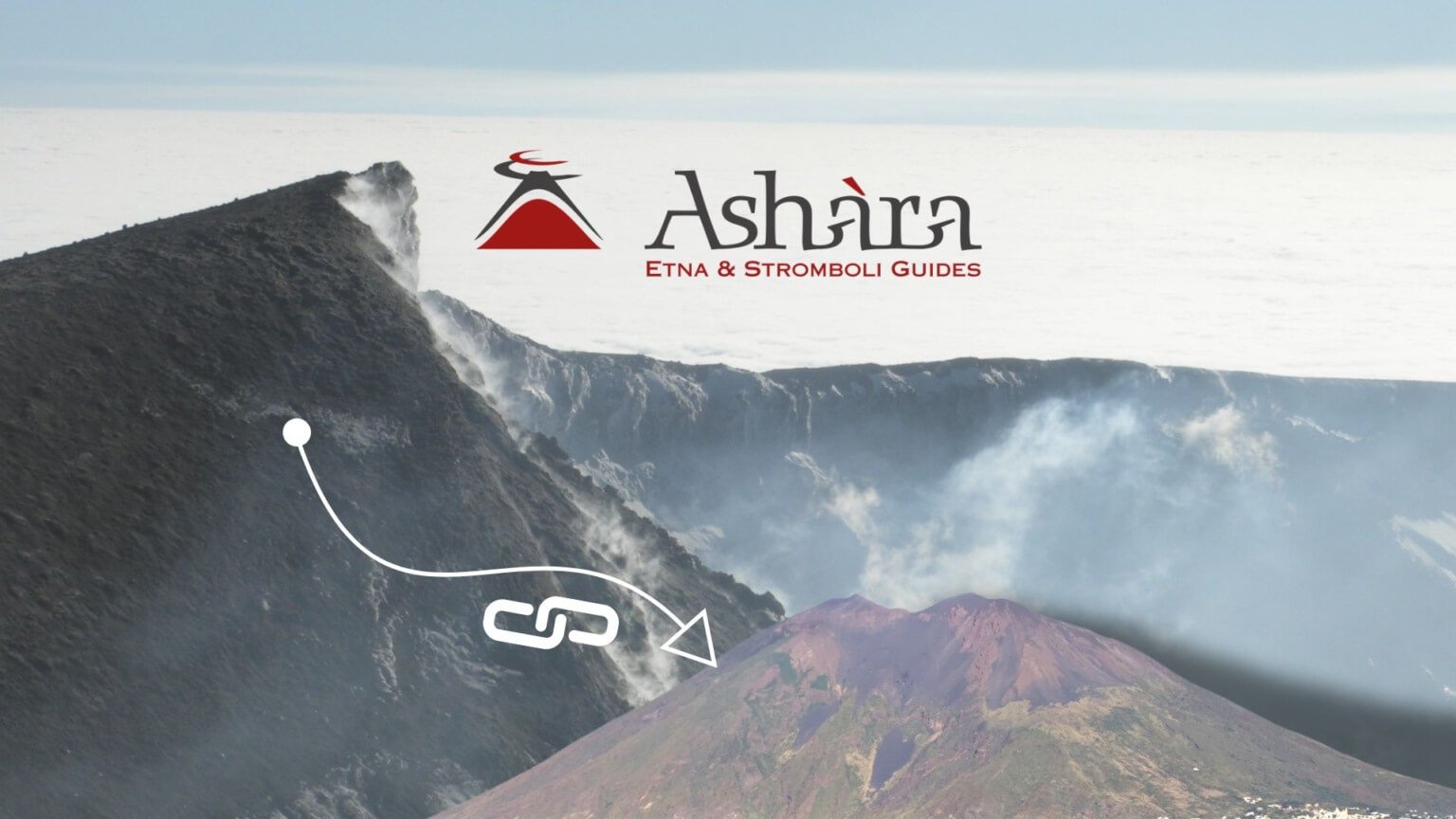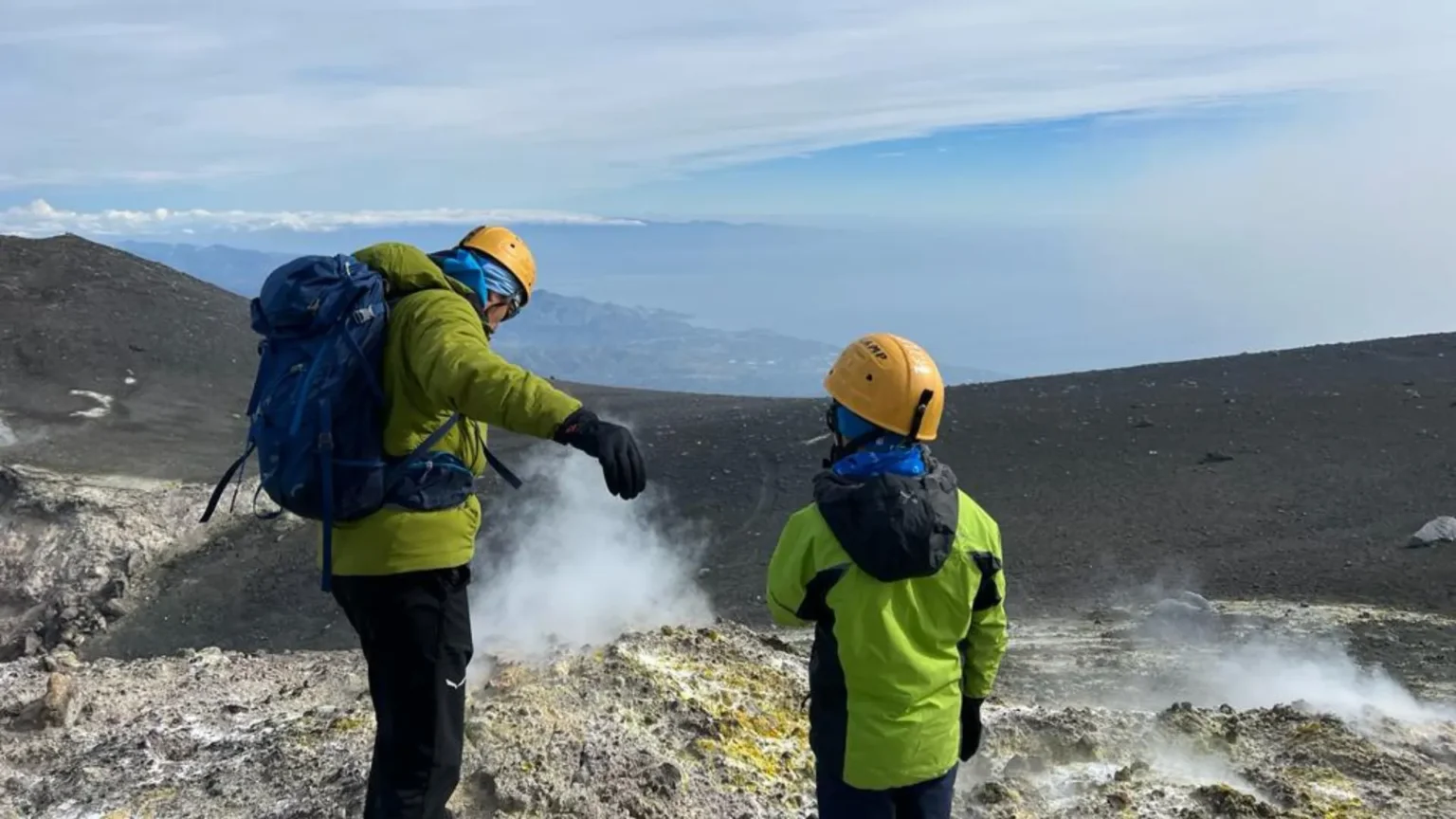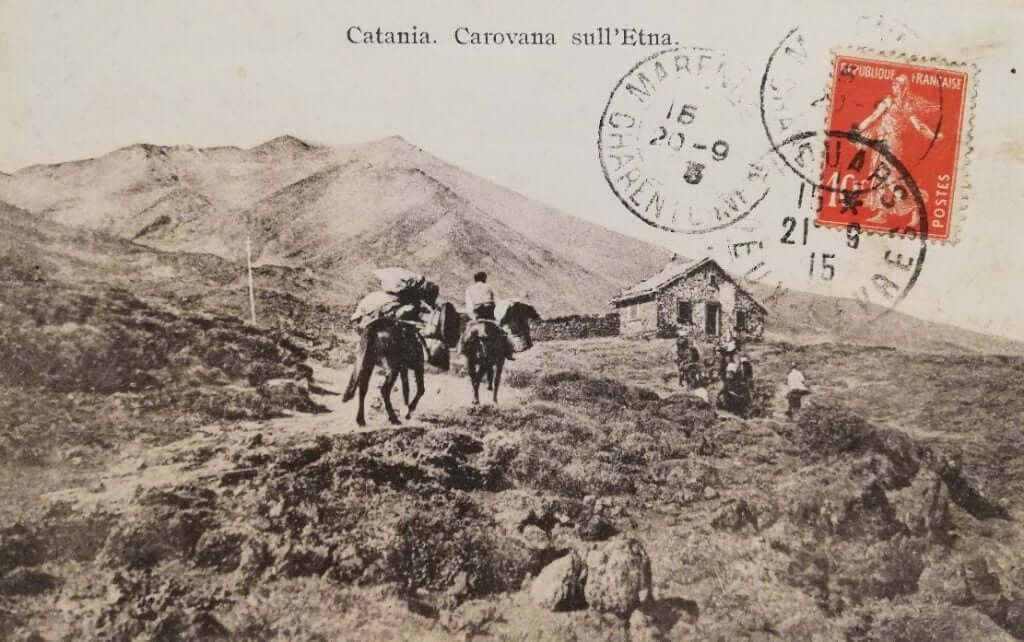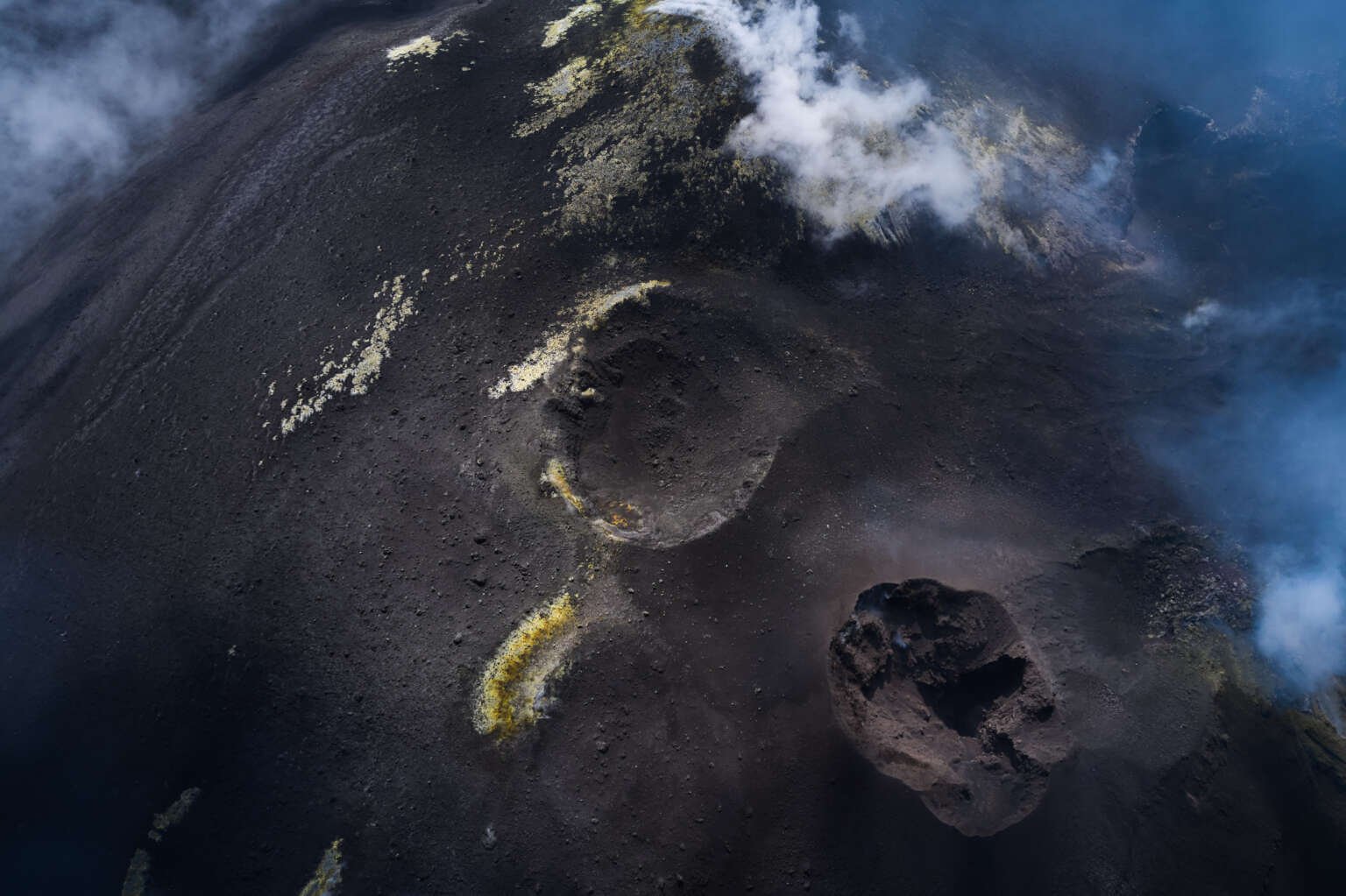Introduction
Mount Etna, the majestic volcano located on the eastern coast of Sicily, is one of the most fascinating and mysterious places on our planet. Also known as "Mongibello" in local tradition, this fiery giant has sparked interest for centuries, captivating daring travelers and vulcanology scholars alike. From a geological-geodynamic standpoint, it is located at the continental collision between the Eurasian Plate and the African Plate
But where does the name 'Etna' come from, and what does it mean?
Shortly, you will discover the Ancient Name of Etna, a volcano that, in addition to its great history, hosts a wide range of unique ecosystems and incredible flora and fauna.
From the dense chestnut and beech forests to the expanses of black lava, from the panorama of wild and unspoiled nature to the breathtaking view of the Mediterranean Sea, Etna is a true natural paradise.
In this article, we will explore the wonders of this extraordinary volcano, examining its history, geology, and significance for Sicilian culture and ecosystem. Are you ready to embark on a journey into the majesty of Etna?
History and Meaning of the Name Etna
Etna has a rich and fascinating history that dates back millennia. The word "Etna" derives from the ancient Greek word “Aitne“, which literally means "furnace". This name is perfectly appropriate, considering that Etna is one of the most active volcanoes in the world, with documented eruptions dating back more than 2700 years ago.
This name was chosen for Etna because of its constant volcanic activity and its spectacular eruptions that resemble the flames of a burning furnace.
The geological characteristics of Etna
In addition to its great volcanic history, the Etna massif is unique in terms of biodiversity. The result of great adaptation to life in its various forms, wild and unspoiled, a symbiosis of fire, air, water, and earth.
Originally a shield volcano, characterized by fissure-type eruptions and effusive nature, it has evolved into a stratovolcano or composite volcano, the result of the overlapping in time and space of more or less viscous (or fluid) lava flows and pyroclastic products (of explosive origin). The combination of these two aspects today gives rise to the pseudo-conical morphology.
From a geodynamic point of view, it is the highest volcano in Europe and one of the most active volcanoes in the world, both in terms of the quantity of lava emitted and the frequency of eruptive events. The development of basic-type volcanism (rich in iron and magnesium) is linked to the presence of extensional tectonics affecting the eastern margin of Sicily, which allows magma to rise from a source area located in the Earth's mantle.
Equipped with a very complex and dynamic internal uprising structure, magma can linger at different levels before giving rise to sub-surface volcanic activity. Etna is mainly composed of basaltic rocks (such as basalt or trachybasalt), i.e., with relatively low silicon content. Typical minerals, often also detected macroscopically, include olivine, pyroxene, biotite, and plagioclase, with the presence of xenolithic elements not uncommon.
Etna by definition is an open conduit volcano, which implies the continuous transfer of energy outward, whether it occurs through effusion, explosion, or 'simply' more or less stable degassing. The magma system can rise through the main conduit, or preferential ascent path, feeding one or more summit air craters, giving rise to terminal and/or sub-terminal activity.
It is not uncommon for intrusions into lateral fissures to occur, which can give rise to eruptions on the flanks, often eccentric. The latter are statistically less frequent but with a high potential for danger, especially in proximity to inhabited areas.
In this regard, the presence of numerous secondary volcanic cones (whose origin is due to the previously defined flank eruptions), classified as "Adventitious Cones or Monogenetic Cones", are the result of a single eruptive event. These "small volcanic structures" formed overlaying the entire volcanic edifice can be attributed as a whole to a volcanism that developed over the last 25-30 thousand years.
Often accessible to visitors, they offer a unique opportunity to experience and interact with the volcano.
Eruptions and volcanic activity of Etna
Etna is one of the most active volcanoes in the world, with documented eruptions dating back more than 2700 years ago. Throughout its history, Etna has had eruptions of varying intensity and duration. Eruptions can range from slow lava flows along the volcano's slopes to explosive eruptions that eject ash and volcanic rocks into the air.
Etna's eruptions are spectacular and fascinating, but they can also be dangerous for those who venture without a guide. It's important to follow the directions of local authorities and expert guides during a visit to Etna. Etna's eruptions can cause lava flows, which fortunately, in most cases, flow into the Valle del Bove or stop because it's not being fed enough.
The history of Etna
Etna has a rich and fascinating history that dates back millennia. The earliest records of volcanic eruptions on Etna date back to ancient Greece, with the first written descriptions dating back to the 5th century BC. Over the centuries, Etna has witnessed numerous eruptive events, some of which have been devastating. These eruptions have significantly influenced the geography and life of the communities living at the foot of the volcano.
The most famous eruption of Etna
Among the most famous eruptions of Etna are those of 1669 and 1928-1929. The eruption of 1669 was one of the largest historical eruptions of Etna, causing the destruction of numerous cities and villages. The eruption of 1928-1929 created a spectacular lava column that poured into the surrounding valleys.
These eruptions have left a deep imprint in the collective memory of the region's inhabitants and have contributed to shaping the legend and mythology associated with Etna.
Most popular tourist excursions on Etna
Etna attracts thousands of visitors every year eager to explore its natural beauty and fascinating history. There are many popular tourist attractions worth visiting during a trip to Etna.
A very popular attraction is the Grotta del Gelo, an ice cave located at about 2,000 meters above sea level. Despite Sicily's Mediterranean climate, ice stalactites and stalagmites form inside the cave, creating a magical atmosphere. It is possible to visit the cave with the help of an expert guide and discover the secrets of this unique phenomenon.
Lastly, one cannot visit Etna without taking a hike to its main crater. Guided excursions are available for visitors who wish to climb to the summit and observe the active crater up close. It's an exciting experience that allows you to appreciate the grandeur and power of this 'living' volcano.
Cultural and local cuisine around Etna
Etna is not only a place of natural beauty, but also a rich source of culture and traditions. The villages and towns surrounding the volcano are an endless source of history and art, offering visitors the opportunity to immerse themselves in Sicilian culture. One of the most fascinating places to visit is Taormina, a picturesque town perched on a hilltop that offers spectacular views of Etna and the Ionian Sea. Taormina is famous for its ancient Greek-Roman theater, which still hosts shows and concerts today. Strolling through the narrow streets of Taormina's historic center is like taking a step back in time, admiring the traditional architecture and discovering small shops and characteristic restaurants.
Another must-visit for culture enthusiasts is Catania, the second largest city in Sicily. Catania is a vibrant and lively city, with a rich history reflected in its monuments and museums. The Cathedral of Sant'Agata, the Ursino Castle, and the Benedictine Monastery are just some of the attractions worth visiting. Additionally, Catania is famous for its cuisine, which offers delicacies such as pasta alla norma, arancino, and granita.
Safety precautions and tips for visiting Etna
Before visiting Etna, it is important to take some precautions to ensure your safety. First and foremost, it is essential to follow the instructions provided by the Park Authority to access the various areas of Etna. Some areas may be closed or subject to restrictions due to volcanic activity.
In addition, it is advisable to wear suitable clothing and footwear to tackle the uneven and often slippery terrain of Etna. It is also important to bring water, food, and a GPS device to navigate during hikes.
During the excursion on Etna, it is essential to follow the instructions of the guides or authorities present. They are knowledgeable about the area and can provide important information for your safety. authorized guides and not stray from the marked trails. The nature of the terrain and volcanic activity can make certain areas dangerous or unstable.
Finally, it is important to check the weather conditions before embarking on an excursion to Etna. The climate at the top of the volcano can be very different from that in the valley, with often low temperatures and strong winds.
Indossare abbigliamento adeguato e portare giacche o coperte extra può essere utile per affrontare le condizioni climatiche avverse.
Conclusions: The charm and mystique of Etna
Etna is an extraordinary place that fascinates and enchants anyone who visits it. Its millenary history, natural beauty, and importance to Sicilian culture make it a unique place in the world.
Exploring Etna means immersing oneself in a world of natural wonders and adventure, but also discovering the cultural and culinary richness of Sicily. From panoramic excursions to trekking on the crater, from historic villages to culinary traditions, Etna offers an unforgettable experience for all visitors.
Whether you are passionate about vulcanology, nature lovers, or curious travelers, Etna will surprise you with its majesty and unique charm.
Exploring Etna means experiencing the places, and especially the people. It's the people who make Etna what it is, yes, because Etna is one of us, Etna is our Mother.
Get ready to experience an unforgettable adventure on the slopes of this fascinating and mysterious volcano.
Explore Etna with Ashàra
We have shared the story of our Majestic volcano. Today, thanks to our Team our team of experienced and trained guides, it is possible to tour Etna in complete safety.














